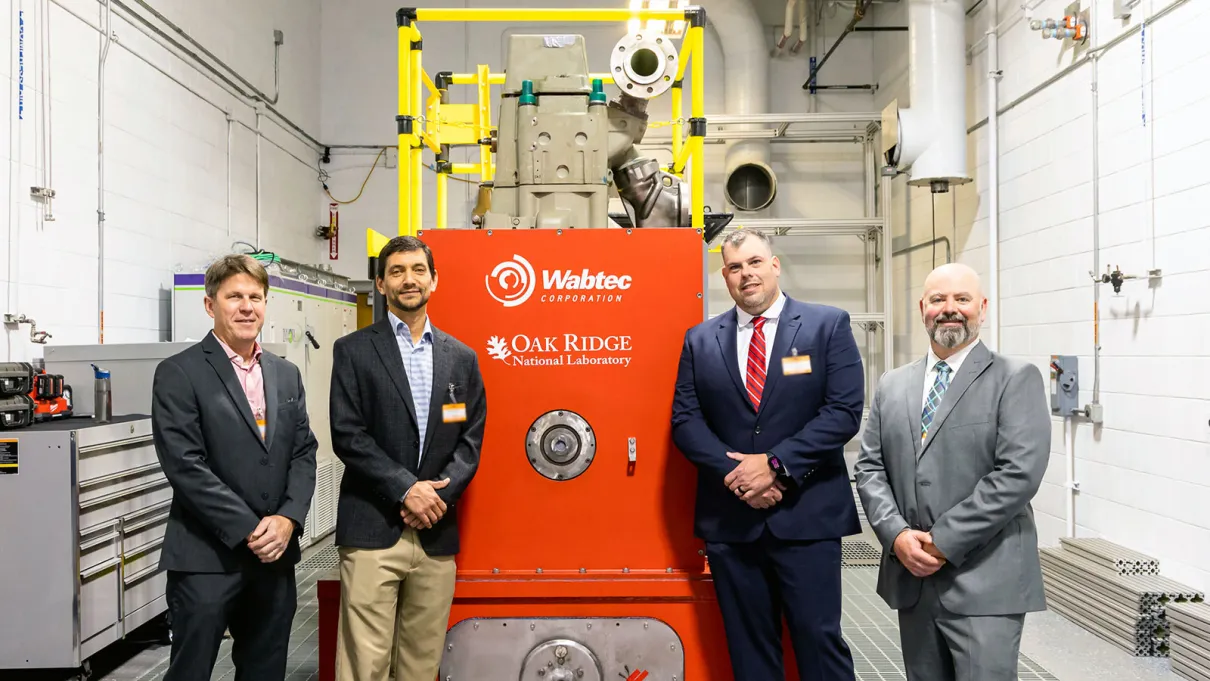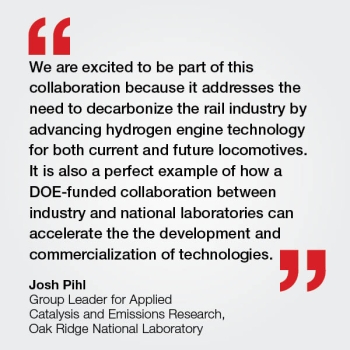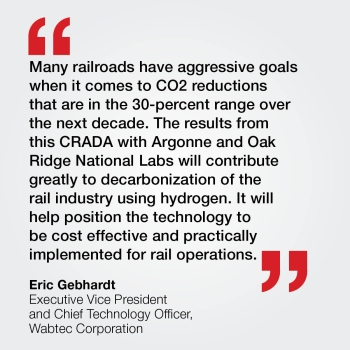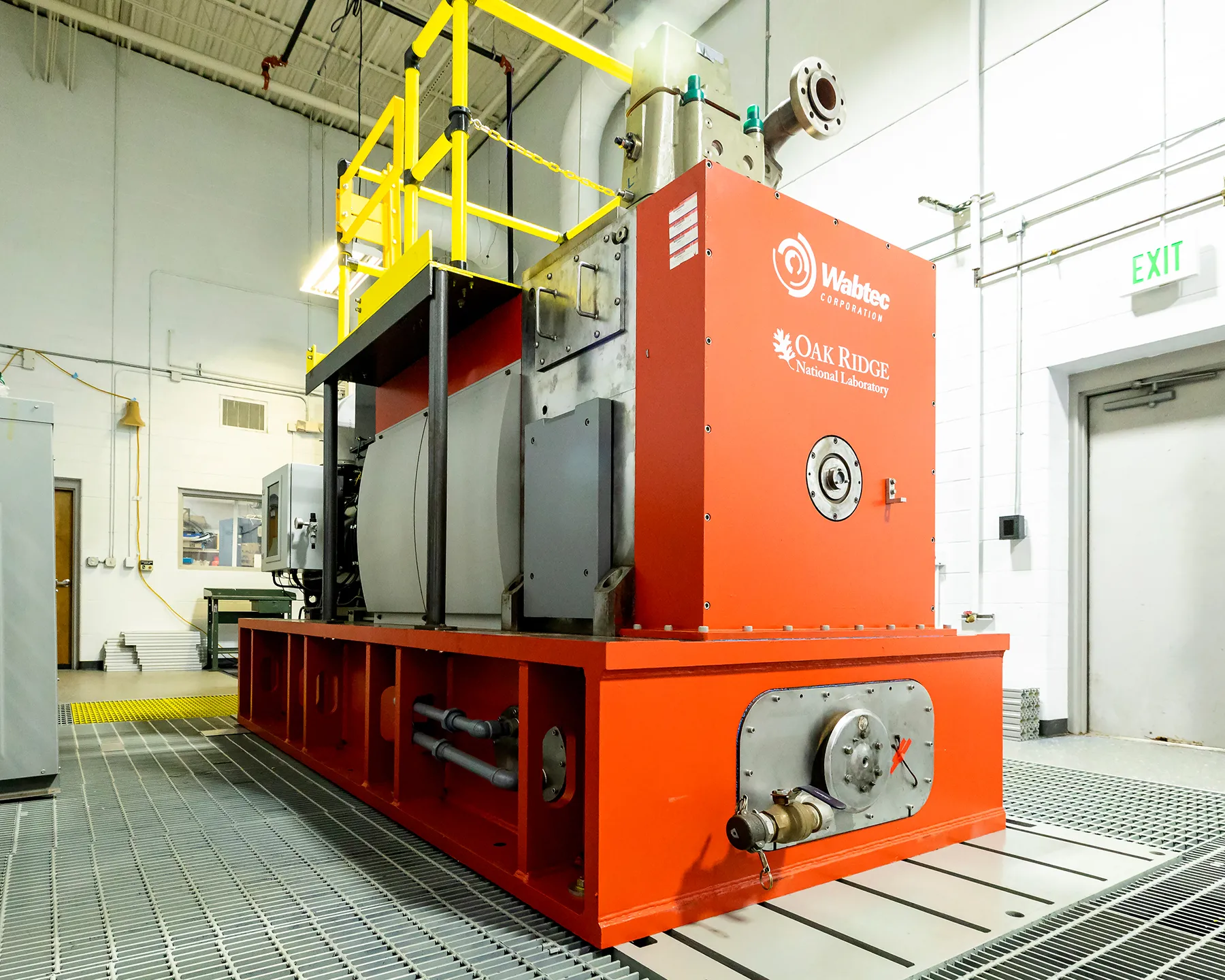
Collaborating on Carbon Reduction
Climate change is taking center stage in the global consciousness. It is a reality, and the reduction of greenhouse gas (GHG) emissions is a focus for everyone in the public and private sector. More important, it requires the development of new technologies that address this global challenge.
One of those emerging technologies is hydrogen. This technology will play a role in Wabtec’s vision of achieving a zero-emission global rail network. However, given the cost and maturity of the technology, it is not currently ready for commercial implementation in the freight rail industry. That is a monumental task requiring a collaborative approach to bridge the gap between emerging technology and practical application.
To identify solutions for applying hydrogen in the rail industry, Wabtec entered into collaborative research and development agreements (CRADA) with the Oak Ridge and Argonne National Labs – two of the nation’s premiere centers of excellence specializing in energy-related solutions. This week, researchers from the multidisciplinary team kicked off the project and celebrated the installation of Wabtec’s single-cylinder dual-fuel locomotive engine in the National Transportation Research Center, a Department of Energy Office of Science user facility located at Oak Ridge National Lab (ORNL).
This collaboration is part of Wabtec’s dual path technology approach on hydrogen power for rail. One approach is using fuel cells as an alternative power source for locomotives. Last year, Wabtec announced a collaboration on fuel cells with General Motors, an area in which the automaker has enormous expertise.
The parallel approach is enhancing Wabtec’s existing internal combustion locomotive engines to burn hydrogen. This approach is the focus of the CRADA with the two national labs.
The team is focused on taking hydrogen combustion technology from simulation to realization utilizing the Wabtec engine. Hydrogen as fuel has many advantages, but locomotive engines must be modified to ensure safe, efficient, and clean operation. The team will develop hardware and control strategies for the engine, which will run on hydrogen and diesel fuel to demonstrate the viability of using alternative fuels.


“We are excited to be a part of this collaboration because it addresses the need to decarbonize the rail industry by advancing hydrogen engine technology for both current and future locomotives,” said Josh Pihl, an ORNL distinguished researcher and group leader for applied catalysis and emissions research. “It is also a perfect example of how a DOE-funded collaboration between industry and national laboratories can accelerate the development and commercialization of technologies to help reduce carbon emissions from transportation.”
In the project’s first phase, the ORNL team will work on hardware changes for retrofitting locomotives. Their goal is to reduce CO2 emissions from the roughly 25,000 locomotives already in use in North America. Locomotives have a service life of more than 30 years, so replacing the entire fleet would take decades.
During the second phase of the project, ORNL and Wabtec will continue to alter the engine hardware to increase the amount of hydrogen that can be used. The team aims to completely replace diesel with hydrogen or low-carbon fuels in new locomotives.
At the same time, Argonne will leverage more than a decade of experience in modeling hydrogen injection and combustion to create a modeling framework to study combustion and emission control technologies used in hydrogen combustion engines. Experts in fuel injection, kinetics and combustion modeling, design optimization, high-performance computing and machine learning will take the project from start to finish.

“Many railroads have aggressive goals when it comes to CO2 reductions that are in the 30-percent range over the next decade,” said Eric Gebhardt, Wabtec’s Chief Technology Officer. “The results from this CRADA with Argonne and Oak Ridge National Labs will contribute greatly to decarbonization of the rail industry using hydrogen. It will help position the technology to be cost effective and practically implemented for rail operations.”
Wabtec projects that the economics on hydrogen will be viable leading to the eventual commercial adoption of both a retrofit and a new unit option. This is based on the cost and performance of fuel cells dramatically improving over the decade and the cost of green hydrogen reducing and being more available over the same period.
The collaboration with the labs is another example of Wabtec investing to lead the rail industry in hydrogen, as it has with the Tier 4 and the battery-electric locomotives.
